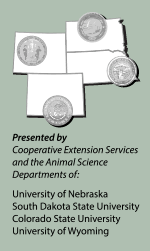Application of Selection Indexes
LOVELAND, Colo. (Nov. 18, 2015) — “Don’t make sire selection more cumbersome than it needs to be,” emphasized University of Nebraska beef genetics Extension specialist Matt Spangler as he kicked off the genetics session during the second day of the Range Beef Cow Symposium in Loveland, Colo., Nov. 17-19.
Sire selection “would be simpler if only one trait affected a cow herd’s profitability,” Spangler acknowledged. “In truth, there’s a multitude of traits.”
So how should a producer approach the sire-selection process? Spangler shared a list of three questions producers should ask themselves:
- 1) What are my breeding and marketing goals?
- 2) What traits directly impact the profitability of my enterprise?
- 3) Are there environmental constraints?
Regarding the traits that impact profitability, Spangler emphasized it is important to recognize the difference between “economically relevant traits,” or ERTs, and indicators of those traits. He defines ERT’s as: traits that are directly associated with a revenue stream or cost.

Matt Spangler
For example, calving ease is an economically relevant trait, whereas birthweight is an indicator of that trait. Spangler pointed out, “Producers don’t get paid for birthweight or have a direct cost for that, but they do have a cost if they have to provide labor when a calf is born or if there is calf mortality due to calving ease.”
As a second example, he noted that ribeye area is an indicator of the economically relevant trait yield grade.
As producers wade through the abundance of traits, selection indexes are a powerful tool, Spangler noted, adding, “You have to use the one appropriate for your breeding objectives.”
He provided this example: “The Angus $B index (for beef value) is the most popular index, and it is a great index, but if you sell at weaning and retain heifers, it’s not the index to use for your marketing goals.”
Looking to the future, Spangler emphasized that improvements in current indexes still need to be made by increasing the number of economically relevant traits that have EPDs. Additionally, Spangler said he is concerned that many ERT’s are not currently evaluated nor collected routinely in the seedstock sector, even though they drive value downstream.
He pointed out that, for the future, enterprise-level profitability needs to move closer to industry-level profitability. For instance, he gave the example that presently no direct economic benefit for a producer exists to improve tenderness, even though it is valued by the industry.
In closing Spangler advised producers, “Know your costs; select on profit, not just revenue.”
He added, “Multiple-trait selection is critical and could become more cumbersome, but economic indexes help alleviate this. Find and use index values that meet your breeding objective.”
Spangler shared the following websites as helpful resources: http://beef.unl.edu, www.beefefficiency.org, www.nbcec.org, www.eBEEF.org. He also referenced the across-breed EPD tables as a tool to compare traits between breeds. View the 2015 table at https://www.angus.org/Nce/AcrossBreedEpdAdjFactors.aspx.
Editor’s Note: This summary was written under contract or by staff of the Angus Journal®, which retains the copyright. To request to reprint this article, contact Shauna Rose Hermel, editor, at 816-383-5270. PowerPoints are posted with permission of the presenter and may not be reproduced in whole or in part without the express permission of the presenter. Angus Journal claims copyright to this web site as presented. We welcome educational venues and cattlemen to link to this site as a service to their audience.
The Angus Journal's coverage of the event is made possible through collaboration with the event committee and sponsorship of LiveAuctions.tv. For questions about this site, or to notify us of broken links, click here. Look for additional coverage in the Angus Journal, the Angus Beef Bulletin, the Angus Journal Daily, the Angus Beef Bulletin EXTRA and Angus TV.


